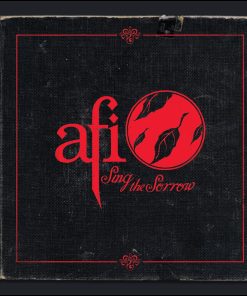La Monte Young / Marian Zazeela – 31 VII 69 10:26 – 10:49 PM / 23 VIII 64 2:50:45 – 3:11 AM The Volga Delta LP Superior Viaduct
$ 29,98 Original price was: $ 29,98.$ 17,99Current price is: $ 17,99.
La Monte Young was born in Bern, Idaho in 1935. He began his music studies in Los Angeles and later Berkeley, California before relocating to New York City in 1960, where he became a primary influence on Minimalism, the Fluxus movement and performance art through his legendary compositions of extended time durations and the development of just intonation and rational number based tuning systems. With his collaborator since 1962, artist Marian Zazeela, they would formulate the composite sound environments of the Dream House, which continues to this day.
Seeing reissue for the first time since its initial 1969 release, Young and Zazeela’s first full-length album is often referred to as “The Black Record” due to Zazeela’s stunning cover design, complete with the composer’s liner notes in elegant hand-lettered script.
Side one was recorded in 1969 (on the date and time indicated by the title) at the gallery of Heiner Friedrich in Munich, where Young and Zazeela premiered their Dream House sound and light installation. Featuring Young and Zazeela’s voices against a sine wave drone, the recording is a section of the longer composition Map of 49’s Dream the Two Systems of Eleven Sets of Galactic Intervals Ornamental Lightyears Tracery (begun in 1966 as a sub-section of the even larger work The Tortoise, His Dreams and Journeys, which was begun in 1964 with Young’s group The Theatre of Eternal Music). According to Young, the raga-like melodic phrases of his voice were heavily influenced by his future teacher, the Hindustani singer Pandit Pran Nath.
Side two, recorded in Young and Zazeela’s NYC studio in 1964, is a section of the longer composition Studies in the Bowed Disc. This composition is an extended, highly abstract noise piece for bowed gong (gifted by sculptor Robert Morris). The liner notes explain that the live performance can be heard at 33 and 1/3 RPM, but may also be played at any slower speed down to 8 and 1/3 RPM for turntables with this capacity.
“La Monte Young is the daddy of us all.” —Brian Eno
Fast Shipping and Professional Packing
We offer a broad range of shipping options due to our long-running partnerships with UPS, FedEx and DHL. Our warehouse employees will pack all goods to our exacting requirements. Your items are carefully inspected and secured properly prior to shipping. We ship to thousands of customers every day from all over the world. This demonstrates our dedication to becoming the largest online retailer in the world. Warehouses and distribution centres can be located in Europe as well as the USA.
Note: Orders that contain more than one item will be assigned a processing date depending on the item.
We will carefully examine all items before sending. Today, the majority of orders will be shipped within 48 hours. The expected delivery time will be between 3 and 7 days.
Returns
Stock is dynamic. It's not completely managed by us, since we have multiple entities, including the factory and the storage. The actual inventory can fluctuate at any time. It is possible that the stocks could be depleted after your order has been processed.
Our policy lasts 30 days. If you haven't received the product within 30 days, we're not able to issue a refund or an exchange.
To be eligible for a refund the product must be unopened and in the same state as when you received it. The item must be returned in its original packaging.
Related products
Uncategorized
Uncategorized
Uncategorized
Uncategorized
Uncategorized
Uncategorized
Uncategorized
Uncategorized
Uncategorized
Uncategorized
Uncategorized
Uncategorized
Uncategorized
Uncategorized
Uncategorized
Uncategorized
Uncategorized
Uncategorized
Uncategorized
Uncategorized
Uncategorized




































